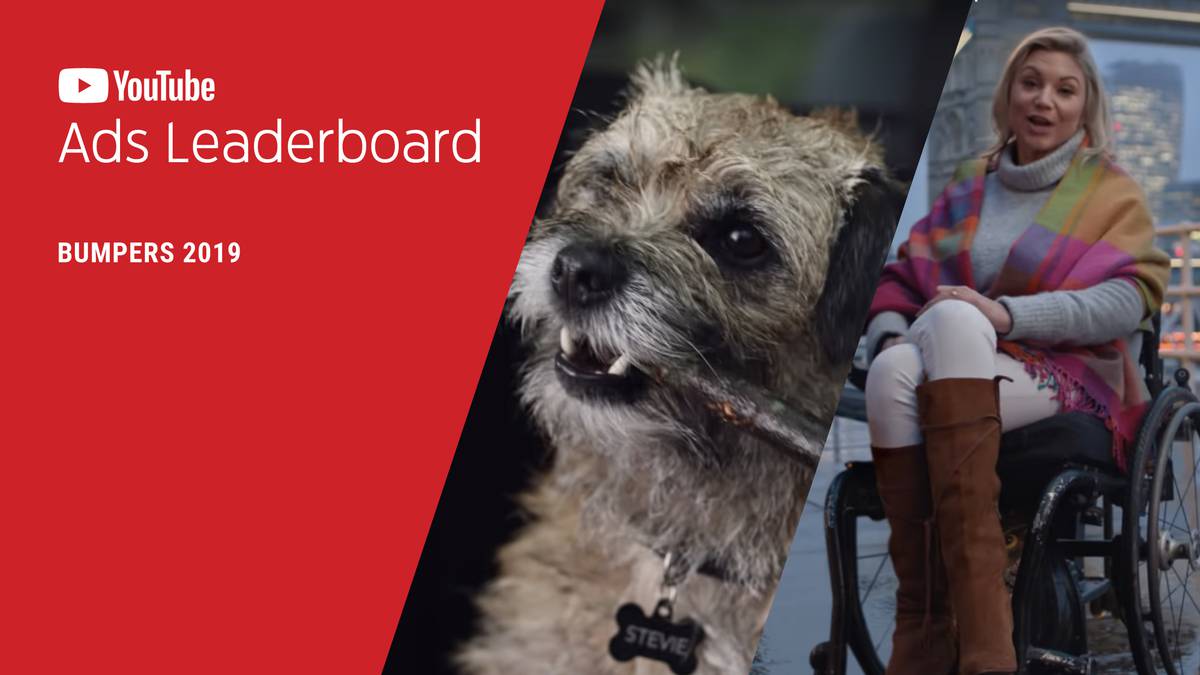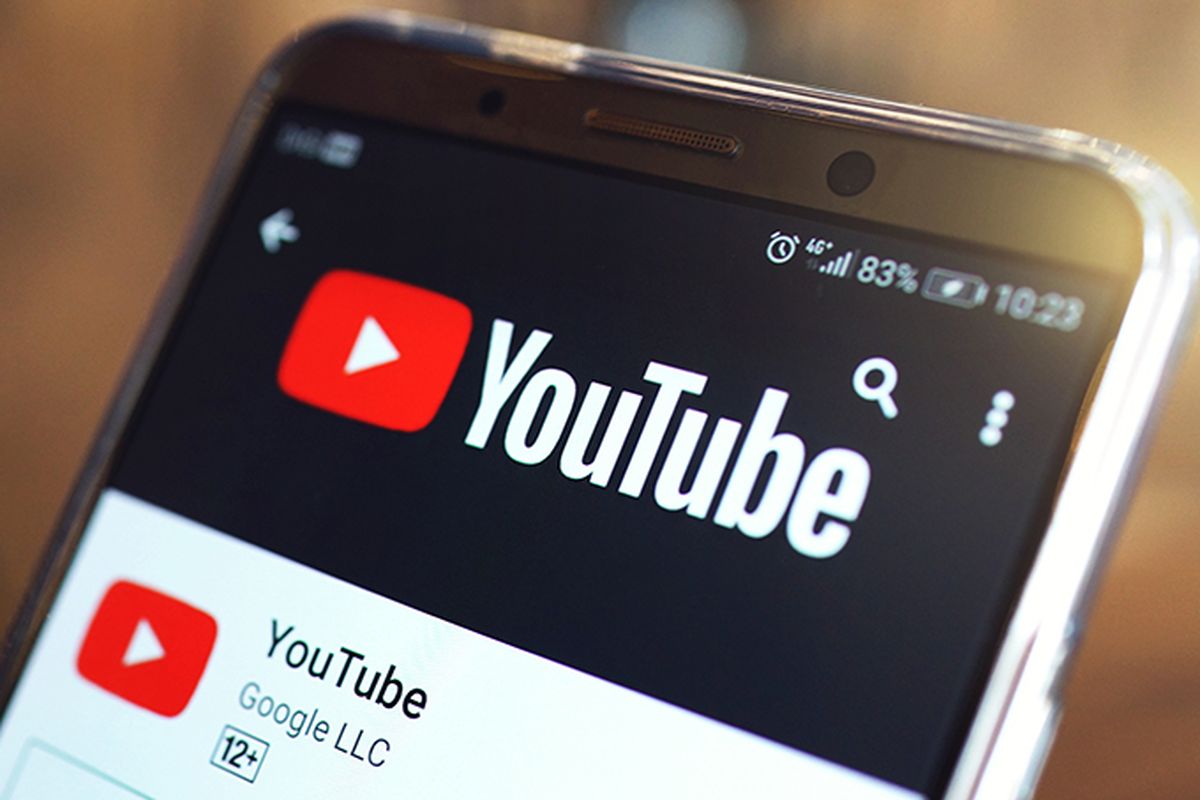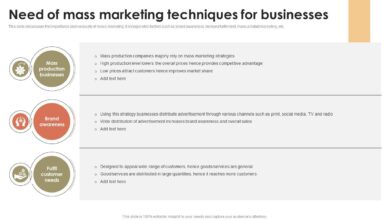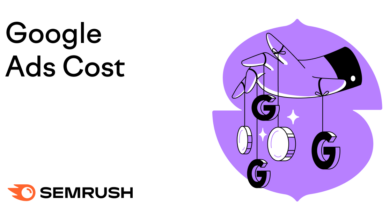
10 Years YouTube Best Advertising
10 Years YouTube Best Advertising: Wow, a decade of YouTube ads! It’s been a wild ride, hasn’t it? From those early, slightly clunky pre-roll ads to the highly targeted, beautifully crafted campaigns we see today, the evolution is incredible. This post dives into the best of the best, exploring the most successful campaigns, the creative genius behind them, and what the future holds for YouTube advertising.
Get ready for a trip down memory lane (and a glimpse into the future!).
We’ll cover everything from the shift in ad formats and the impact of mobile viewing to the importance of storytelling and killer creative. We’ll analyze successful campaigns, dissect what made them tick, and offer practical tips you can use to elevate your own YouTube advertising game. Think of this as your ultimate guide to acing YouTube ads over the past 10 years – and beyond!
Evolution of YouTube Advertising Over the Past Decade
YouTube advertising has undergone a dramatic transformation in the past ten years, evolving from a relatively simple landscape to a highly sophisticated and nuanced ecosystem. This evolution has been driven by technological advancements, changing viewer behavior, and the ever-increasing sophistication of advertising technologies. The shift reflects not only changes in ad formats but also in targeting capabilities and measurement methodologies.
Significant Changes in YouTube Advertising Formats (2013-2023)
The early days of YouTube advertising (around 2013) were dominated by pre-roll ads – those unskippable ads that played before the desired video. Over time, however, the landscape broadened considerably. Skippable pre-roll ads became the norm, offering viewers the option to bypass the advertisement after a short period. This shift reflected a growing awareness of user experience and the need to avoid alienating viewers with intrusive advertising.
Alongside this, mid-roll ads (ads appearing within videos) and display ads (banner ads alongside videos) gained prominence, providing advertisers with more placement options and greater flexibility. The introduction of bumper ads (short, unskippable ads) and non-skippable in-stream ads further diversified the options. In recent years, we’ve seen a rise in interactive ads and shoppable ads, allowing for direct engagement and purchase opportunities within the YouTube environment.
The Impact of Mobile Viewing on YouTube Ad Strategies
The explosion of mobile viewing has fundamentally altered YouTube ad strategies. With a significant portion of YouTube consumption now occurring on smartphones and tablets, advertisers have had to adapt their creative approaches to suit smaller screens and shorter attention spans. Vertical video ads have become increasingly common, mirroring the mobile viewing experience. Furthermore, mobile-first targeting and optimization have become crucial for maximizing the reach and effectiveness of campaigns.
Advertisers now frequently utilize data points like mobile device type, location, and usage patterns to refine their targeting strategies. The need for concise and engaging creative, designed to capture attention quickly on smaller screens, has become paramount.
The Shift from Pre-roll Ads to Other Formats
While pre-roll ads remain a significant part of the YouTube advertising landscape, their dominance has diminished. The introduction of skippable pre-roll ads, coupled with the rise of mid-roll, display, and bumper ads, has created a more diverse and nuanced approach to advertising. Mid-roll ads, strategically placed within videos, can benefit from higher engagement rates as viewers are already invested in the content.
Display ads offer a less intrusive approach, allowing for branding and awareness campaigns without interrupting the viewing experience. Bumper ads, despite their brevity, can still effectively deliver a brand message with high frequency. This diversification allows advertisers to tailor their approach based on campaign goals and target audience behavior.
Effectiveness of Different Ad Formats Across Various Campaign Goals
The effectiveness of different YouTube ad formats varies considerably depending on the campaign’s goals. For example, pre-roll ads, both skippable and non-skippable, are often effective for driving awareness and reach. Mid-roll ads, due to their placement within engaging content, can be more effective for driving consideration and engagement. Display ads are typically better suited for branding and retargeting.
Bumper ads excel at creating top-of-mind awareness due to their high frequency. Performance metrics, such as click-through rates (CTR), view-through rates (VTR), and conversions, are crucial in evaluating the effectiveness of each format for specific campaign objectives. A well-defined strategy considers the interplay between ad format, targeting parameters, and performance metrics to optimize results. For instance, a brand building campaign might prioritize VTR and reach, while a direct response campaign would focus on CTR and conversions.
Top-Performing YouTube Ad Campaigns (2013-2023)

Source: googleapis.com
Analyzing successful YouTube ad campaigns reveals key strategies for impactful marketing. Over the past decade, certain campaigns have consistently outperformed others, demonstrating the power of creative storytelling, targeted demographics, and effective measurement. Understanding these successes provides valuable insights for future marketing endeavors.
Highly Successful YouTube Ad Campaigns
The following table highlights three highly successful YouTube ad campaigns from 2013 to 2023, detailing their success factors and resulting impact. These campaigns represent diverse approaches, yet all share a commitment to engaging content and strategic targeting.
| Campaign Name | Success Factors | Results |
|---|---|---|
| Dove’s “Real Beauty Sketches” | Powerful storytelling, emotional connection, leveraging user-generated content, tapping into a widespread societal conversation about beauty standards. The campaign used a simple yet effective visual approach, demonstrating the disparity between how women perceive themselves and how others see them. | Viral sensation, massive social media engagement, significant brand uplift, increased sales, and a long-lasting positive impact on Dove’s brand image. The campaign’s emotional resonance resonated deeply with audiences, resulting in widespread sharing and discussion. |
| Old Spice’s “The Man Your Man Could Smell Like” | Humorous and unexpected approach, memorable characters, strong call to action, engaging with online communities through interactive content, and leveraging the power of social media. The campaign utilized a rapid-fire series of short, funny videos featuring the charismatic Isaiah Mustafa. | Exceptional viral success, significantly increased brand awareness and positive sentiment, demonstrated the effectiveness of humorous and unexpected marketing approaches, and resulted in substantial sales growth. The campaign’s interactive elements further fueled engagement. |
| Nike’s “Just Do It” (various iterations over the decade) | Inspirational storytelling, focusing on athletic achievement and overcoming challenges, featuring diverse athletes and relatable narratives, and aligning with broader cultural themes of perseverance and self-improvement. The campaign consistently evolved, adapting to current cultural trends and showcasing a diverse range of athletes and stories. | Sustained brand loyalty, increased market share, consistent high engagement across various platforms, and successful association with athletic achievement and inspiration. The campaign’s longevity and adaptability highlight the importance of consistent branding and relevant messaging. |
Examples of Storytelling and Emotional Connection in YouTube Ads
Several campaigns effectively utilized storytelling and emotional connection to build brand loyalty and drive engagement. Dove’s “Real Beauty Sketches” is a prime example, as the campaign’s focus on self-esteem and realistic beauty standards resonated deeply with viewers. Similarly, many Nike campaigns, featuring stories of perseverance and overcoming obstacles, successfully evoked strong emotional responses. These ads didn’t just sell products; they told compelling stories that viewers could connect with on a personal level.
The use of genuine emotion, relatable characters, and powerful visuals helped forge lasting connections with the audience.
Thinking back on the best YouTube ads of the past decade, a few truly iconic campaigns stand out. To really understand what made them click, though, you need to grasp the platform’s nuances – and that’s where learning more about getting it on with youtube comes in. Understanding the platform’s intricacies is key to crafting effective ads, just as crucial as choosing the right creative for those memorable 10-year YouTube advertising highlights.
Examples of Campaigns Targeting Specific Demographics
Many successful YouTube ad campaigns demonstrate effective targeting of specific demographics. For instance, campaigns focusing on gaming often target younger male audiences, utilizing gaming-related content and influencers. Similarly, beauty product campaigns often target women, using influencers and content tailored to their interests. These campaigns highlight the importance of understanding the target audience and tailoring messaging and visuals to resonate with their specific values and preferences.
Effective demographic targeting increases the chances of an ad campaign reaching the right people with the right message, maximizing its impact and return on investment.
Targeting and Audience Engagement Strategies

Source: kompas.com
YouTube’s advertising landscape has evolved significantly over the past decade, leading to increasingly sophisticated targeting and engagement strategies. Understanding these strategies is crucial for maximizing the return on investment for any YouTube advertising campaign. This section will delve into the various options available to advertisers, highlighting best practices for effective audience reach and engagement.
YouTube Audience Targeting Options
YouTube offers a rich array of targeting options, allowing advertisers to reach highly specific audiences. These options can be combined to create even more precise targeting. Effective targeting ensures your ads are seen by the most relevant viewers, increasing the likelihood of conversions.
- Demographic Targeting: This allows you to target specific age ranges, genders, parental status, and household income levels. For example, a children’s toy company might focus on parents with young children.
- Interest-Based Targeting: This targets users based on their demonstrated interests, gleaned from their YouTube viewing history, Google searches, and other online activities. A fitness brand might target users interested in sports, health, and wellness.
- Affinity Targeting: This targets users based on their long-term interests and affinities. This is useful for building brand awareness among a specific group. A luxury car brand might target users with an affinity for luxury goods.
- Custom Audience Targeting: This allows you to upload your own customer lists (email addresses, etc.) to target specific users. This is ideal for retargeting existing customers or reaching users who have previously interacted with your brand.
- Remarketing: This allows you to show ads to users who have previously interacted with your website or YouTube channel. This is a powerful way to re-engage potential customers who have shown initial interest.
Retargeting Viewers
Retargeting is a critical component of a successful YouTube advertising strategy. By showing ads to users who have already engaged with your content, you increase the chances of conversion. This approach fosters familiarity and reinforces brand messaging. Effective retargeting campaigns often segment users based on their previous interactions.
- Website Visitors: Retarget users who have visited your website but didn’t make a purchase. Show them ads highlighting specific products or promotions.
- Video Viewers: Retarget users who have watched a portion of your videos, but didn’t complete the action you desired (e.g., signing up for a newsletter). Offer them a compelling call to action.
- Engagement Levels: Segment viewers based on their level of engagement (e.g., watch time, likes, comments). Tailor your retargeting message to each segment.
Increasing Viewer Engagement and Watch Time
Maximizing viewer engagement and watch time is key to successful YouTube advertising. Engaging content leads to higher view rates, better brand recall, and ultimately, higher conversion rates. Several strategies can be employed to achieve this.
- Compelling Visuals: Use high-quality video and imagery to capture attention and maintain viewer interest. Think vibrant colors, dynamic shots, and clear messaging.
- Strong Call to Action: Include a clear and concise call to action that encourages viewers to take the next step (e.g., visit your website, subscribe to your channel, make a purchase).
- Personalized Messaging: Tailor your message to resonate with your target audience. Understand their needs and aspirations and craft content that speaks to them directly.
- Interactive Elements: Incorporate interactive elements like polls, quizzes, and questions to increase viewer engagement and participation.
Utilizing YouTube Analytics for Optimization
YouTube Analytics provides a wealth of data that can be used to optimize ad campaigns. By regularly monitoring key metrics, you can identify what’s working and what’s not, and make data-driven adjustments to improve performance.
- View Rate: Track your view rate to see how many people are watching your ads. A low view rate might indicate problems with targeting or ad creative.
- Click-Through Rate (CTR): Monitor your CTR to see how many people are clicking on your ads. A low CTR might suggest that your ad copy or call to action needs improvement.
- Cost Per View (CPV): Analyze your CPV to determine the cost-effectiveness of your campaigns. High CPV might indicate that your targeting is too broad or your bidding strategy needs adjustment.
- Conversion Rate: Track your conversion rate to see how many people are completing the desired action after viewing your ads. A low conversion rate might indicate that your landing page or offer needs improvement.
Measuring the Effectiveness of YouTube Ads

Source: tubefilter.com
Understanding how well your YouTube ad campaigns are performing is crucial for maximizing your return on investment (ROI). Without proper measurement, you’re essentially throwing money into the void. Effective measurement allows for data-driven optimization, leading to improved targeting, creative adjustments, and ultimately, better results. This involves tracking key metrics and using them to inform strategic decisions.
Key Metrics for YouTube Ad Campaign Success
Several metrics provide insights into the performance of your YouTube ad campaigns. These metrics fall broadly into categories reflecting different stages of the customer journey. Analyzing these metrics together provides a comprehensive picture of campaign effectiveness.
| Metric | Description | Example | Improvement Strategy |
|---|---|---|---|
| Views | The number of times your ad was viewed. Important for brand awareness but doesn’t indicate engagement. | 100,000 views | Improve ad creative to increase viewability. Target a more relevant audience. |
| Click-Through Rate (CTR) | Percentage of viewers who clicked on your ad. Indicates ad relevance and appeal. | 2% CTR (2,000 clicks out of 100,000 views) | A/B test different ad creatives. Refine targeting to reach a more interested audience. |
| Conversions | Number of desired actions taken after clicking (e.g., purchases, sign-ups). Directly measures ROI. | 100 conversions (5% conversion rate from clicks) | Optimize landing page for conversions. Improve call to action in the ad. |
| Cost Per Acquisition (CPA) | Cost of acquiring one conversion. Shows efficiency of ad spend. | $10 CPA ($10,000 ad spend / 1000 conversions) | Refine targeting, improve ad creative, optimize bidding strategies. |
Utilizing Metrics to Improve Campaign Performance, 10 years youtube best advertising
By regularly monitoring these metrics, you can identify areas for improvement. For example, a low CTR might suggest the ad creative isn’t engaging enough or the targeting is too broad. A high CPA indicates the campaign is not cost-effective and requires optimization. Conversely, high conversion rates with a low CPA signal a successful and efficient campaign.
The Importance of Setting Clear Campaign Goals and KPIs
Before launching any YouTube ad campaign, define specific, measurable, achievable, relevant, and time-bound (SMART) goals. These goals should align with your overall marketing objectives. Key Performance Indicators (KPIs) are the metrics you’ll track to measure progress toward those goals. For example, if your goal is to increase brand awareness, your KPI might be the number of views.
If your goal is to drive sales, your KPI would be conversions.
Hypothetical YouTube Ad Campaign Dashboard
Below is a sample dashboard showcasing key metrics for a hypothetical YouTube ad campaign promoting a new line of athletic wear. This provides a snapshot of campaign performance at a glance.
| Metric | Value | Target | Status |
|---|---|---|---|
| Views | 150,000 | 200,000 | Progressing |
| CTR | 2.5% | 3% | Needs Improvement |
| Conversions | 750 | 1000 | Progressing |
| CPA | $8 | $5 | Needs Improvement |
Future Trends in YouTube Advertising
The landscape of YouTube advertising is constantly evolving, driven by technological advancements and shifting consumer behavior. Predicting the future is inherently challenging, but by analyzing current trends and emerging technologies, we can paint a picture of what’s likely to shape the next chapter of YouTube advertising. The coming years will see a convergence of immersive experiences, sophisticated AI-driven targeting, and a continued rise in the influence of key personalities on the platform.
The interplay between technological innovation and evolving audience engagement strategies will be pivotal in determining the success of future YouTube advertising campaigns. Understanding these trends is crucial for advertisers looking to maximize their return on investment and remain competitive in the ever-changing digital marketing sphere.
The Impact of Emerging Technologies
Virtual Reality (VR) and Augmented Reality (AR) technologies are poised to revolutionize the way brands interact with their audiences on YouTube. Imagine interactive ads that allow viewers to virtually try on clothes or explore a product in 3D, directly within the YouTube environment. This level of engagement goes beyond traditional video ads, creating a more immersive and memorable brand experience.
Similarly, AI is already playing a significant role, powering sophisticated targeting algorithms that deliver ads to highly relevant audiences, improving ad relevance and reducing wasted ad spend. For example, AI can analyze viewer behavior across multiple platforms to identify potential customers interested in a specific product or service, leading to more effective campaign optimization.
The Growing Importance of Influencer Marketing
Influencer marketing on YouTube is no longer a niche strategy; it’s a mainstream approach for many brands. The authenticity and trust associated with influencers resonate deeply with viewers, making sponsored content more impactful than traditional advertising. Successful campaigns leverage influencers who align with the brand’s values and target audience. For instance, a sustainable clothing brand might partner with an environmentally conscious YouTuber to promote its products, reaching a highly engaged and receptive audience already interested in sustainability.
This targeted approach minimizes wasted ad spend and fosters stronger brand loyalty.
Predictions for Future YouTube Advertising Formats and Strategies
We can anticipate several shifts in YouTube advertising formats and strategies. Interactive video ads will become more prevalent, allowing viewers to influence the narrative or access additional information within the ad itself. Short-form video ads, mirroring the popularity of platforms like TikTok, will continue to gain traction, offering a dynamic and engaging way to capture attention. Programmatic advertising will become even more sophisticated, using AI to optimize ad placement and targeting in real-time, ensuring ads are shown to the most receptive audiences at the optimal moments.
Personalized ad experiences, tailored to individual viewer preferences and behaviors, will also become increasingly common. For example, a travel company might show different destination ads to users based on their past search history and travel preferences.
Challenges and Opportunities Facing YouTube Advertisers in the Next Five Years
The next five years will present both challenges and opportunities for YouTube advertisers. Careful planning and adaptation will be key to success.
Here are some key points to consider:
- Increased Competition: The YouTube advertising landscape is becoming increasingly crowded, requiring brands to develop innovative and engaging campaigns to stand out.
- Maintaining Ad Relevance: Viewers are becoming more discerning, demanding ads that are relevant and non-intrusive. Poorly targeted or irrelevant ads will continue to be penalized by ad blockers and viewer avoidance.
- Data Privacy Concerns: The growing focus on data privacy will impact the ability to target audiences based on personal data. Brands will need to adapt their targeting strategies to comply with evolving regulations.
- Measuring Campaign Effectiveness: Accurately measuring the ROI of YouTube advertising campaigns will remain a challenge, requiring sophisticated analytics and attribution models.
- Keeping Pace with Technological Advancements: The rapid pace of technological change requires continuous learning and adaptation to leverage new formats and technologies effectively.
- Opportunities in Emerging Markets: Expanding into new and emerging markets on YouTube offers significant growth potential for brands willing to adapt their messaging and strategies to local audiences.
- Leveraging the Power of Community: Building strong relationships with YouTube communities and engaging with viewers authentically will be crucial for long-term success.
Conclusion
So, there you have it – a decade of YouTube advertising distilled into its most effective elements. From the groundbreaking campaigns that redefined the landscape to the ever-evolving strategies for reaching your audience, we’ve explored the key takeaways. Remember, success on YouTube hinges on understanding your audience, crafting compelling creative, and relentlessly optimizing your campaigns. The future of YouTube advertising is bright, full of innovative possibilities and exciting challenges.
Are you ready to embrace them?
General Inquiries: 10 Years Youtube Best Advertising
What are some common mistakes to avoid in YouTube advertising?
Ignoring mobile viewers, poor targeting, neglecting A/B testing, and creating low-quality video/audio are major pitfalls.
How important is the call to action in a YouTube ad?
Crucial! A clear, concise CTA guides viewers towards the desired action (e.g., visit website, subscribe, make a purchase).
What’s the best way to measure the ROI of YouTube ads?
Track key metrics like views, clicks, conversions, and cost per acquisition (CPA) to determine your return on investment.
How often should I update my YouTube ad campaigns?
Regularly! Analyze your data and adjust your targeting, creative, and bidding strategies based on performance.





